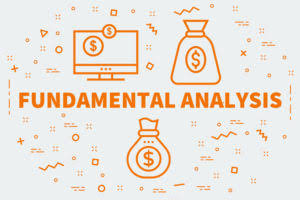
The annual journal entry is a debit of $10,000 to the amortization expense account and a credit of $10,000 to the accumulated amortization account. When shown on the balance sheet, the accumulated amortization account type is Contra accumulated amortization is Account. This account type is used to reduce the book value of intangible assets on a balance sheet. When calculating the amortization of intangible assets, the whole residual asset (value) should be removed from the recorded cost.
- Depending on the asset and materiality, the credit side of the amortization entry may go directly to to the intangible asset account.
- The remaining sum of intangible assets is reported directly under it.
- Amortizing intangible assets is also important because it can reduce a company’s taxable income and therefore its tax liability, while giving investors a better understanding of the company’s true earnings.
- ABC Ltd. purchased the business of XYZ Ltd. for a total of 50,000, while the actual book value of the business was 30,000.
- Accumulated amortization is comparable to depreciation, with the only distinction being the assets to which it is applied.
This means the same amount of amortization expense is recognized each year. On the other hand, there are several depreciation methods a company can choose from. These options https://www.bookstime.com/ differentiate the amount of depreciation expense a company may recognize in a given year, yielding different net income calculations based on the option chosen.
What is Accumulated Amortization?
It is recorded on the balance sheet as a contra asset account, which is positioned below the unamortized intangible assets line item. Amortization helps businesses and investors understand and forecast their costs over time. In the context of loan repayment, amortization schedules provide clarity into what portion of a loan payment consists of interest versus principal. This can be useful for purposes such as deducting interest payments for tax purposes. Amortizing intangible assets is also important because it can reduce a company’s taxable income and therefore its tax liability, while giving investors a better understanding of the company’s true earnings. Accumulated amortization is an important accounting concept that helps businesses keep track of the reduction in the value of their intangible assets.
As a result, investors closely monitor it in order to assess the firm’s financial health. According to current accounting standards requirements, a company must evaluate its intangible assets based on current valuation at least once a year and record them as accumulated amortization. Accumulated amortization is a contra asset account because it reduces the book value of the intangible asset.
What Is Negative Amortization?
Amortization in accounting is a technique that is used to gradually write-down the cost of an intangible asset over its expected period of use or, in other words, useful life. This shifts the asset to the income statement from the balance sheet. No, accumulated depreciation is not a current asset in accounting terms. On a company’s balance sheet, depreciation is recorded as a counter account.
AST SpaceMobile Provides Third Quarter 2023 Business Update – StreetInsider.com
AST SpaceMobile Provides Third Quarter 2023 Business Update.
Posted: Tue, 14 Nov 2023 21:20:04 GMT [source]
The concept is again referring to adjusting value overtime on a company’s balance sheet, with the amortization amount reflected in the income statement. Of the different options mentioned above, a company often has the option of accelerating depreciation. This means more depreciation expense is recognized earlier in an asset's useful life as that asset may be used heavier when it is newest.
Understanding Accumulated Amortization in Balance Sheet
The amortization rate can be calculated from the amortization schedule. The percentage of each interest payment decreases slightly with each payment in the amortization schedule; however, in the process the percentage of the amount going towards principal increases. Let’s say, it's the 25-year loan you can take, but you should fix your 20-year loan payments (assuming your mortgage allows you to make prepayments). You could just change your monthly payments without a penalty for 25 years if you are ever faced with financial difficulties. Regardless of the approaches employed, it is critical to comprehend the residual value, intangible asset’s usefulness, and the impact on actual distribution and production costs. Firms must account for amortization as stipulated in major accounting standards.

The useful life of a copyright is typically the life of the creator plus 70 years. Accumulated amortization and depreciation are both accounting methods used to spread the cost of an asset over its useful life. While both methods are similar in nature, they differ in the types of assets they are applied to. Amortization is the process of allocating the cost of an intangible asset over its useful life. It is similar to depreciation, which is the process of allocating the cost of a tangible asset over its useful life. The purpose of amortization is to match the cost of the intangible asset with the revenue it generates over time.
This balance represents the total amount of the intangible asset that has been expensed. Eventually, the intangible asset will have zero remaining cost, meaning it’s fully amortized. Certain businesses sometimes purchase expensive items that are used for long periods of time that are classified as investments. Items that are commonly amortized for the purpose of spreading costs include machinery, buildings, and equipment. From an accounting perspective, a sudden purchase of an expensive factory during a quarterly period can skew the financials, so its value is amortized over the expected life of the factory instead.
When it comes to Accounting Principles, it is crucial to remember that accumulated amortization of assets is generally confined to particular long-term assets. Accountants use amortization to spread out the costs of an asset over the useful lifetime of that asset. For example, a company often must often treat depreciation and amortization as non-cash transactions when preparing their statement of cash flow. Without this level of consideration, a company may find it more difficult to plan for capital expenditures that may require upfront capital. Depletion is another way that the cost of business assets can be established in certain cases. For example, an oil well has a finite life before all of the oil is pumped out.
The original office building may be a bit rundown but it still has value. The cost of the building, minus its resale value, is spread out over the predicted life of the building, with a portion of the cost being expensed in each accounting year. This linear method allocates the total cost amount as the same each year until the asset’s useful life is exhausted. It is the concept of incrementally charging the cost (i.e., the expenditure required to acquire the asset) of an asset to expense over the asset’s useful life.
- Although it can technically be considered amortizing, this is usually referred to as the depreciation expense of an asset amortized over its expected lifetime.
- The company will allocate the cost of intangible assets over the useful life and record them as expenses.
- However, instead of recording expenses at any particular period, they spread them equally over the useful life.
- Loans are also amortized because the original asset value holds little value in consideration for a financial statement.
- These analysts would suggest that Sherry was not really paying cash out at $1,500 a year.
- In the context of loans, accumulated amortization is used to refer to the gradual repayment of a loan over a set period of time.
- Accumulated amortization is neither a current asset nor a fixed asset.


